About a year ago, we were witnessing the beginning of the end of the COVID stock market party.
It’s the beginning of the end for the greatest stock market rally since the 1999 internet bubble. It’s time to start kicking the guest out of the house.
Nobody likes the end of the party, especially one this good. There will be anger and insults. There will be guests that try to come back to join the party. But it’s time to start packing up and heading out.
We’ve been on a long high and we’re nowhere near the bottom.
Unfortunately, it’s time to kick the rest of the guests out.
We’re entering a bear market that will take the rest of the market with it.
The End of The Beginning
But before we go to the end, let’s revisit the end of the beginning. I mainly use the 200-day and 50-day moving averages to figure out if we’re in a bear market. It’s very crude and, as you’ll see in the charts, those averages don’t give you exact entries for short sales, but they are still the best way I have found to quickly identify weak stocks and markets.
Last May, I picked a smattering of overvalued, COVID related-stocks that looked overextended. And, overall, the stocks did not disappoint on the downside. Here’s a quick review of those stocks:
Zoom & Teledoc…
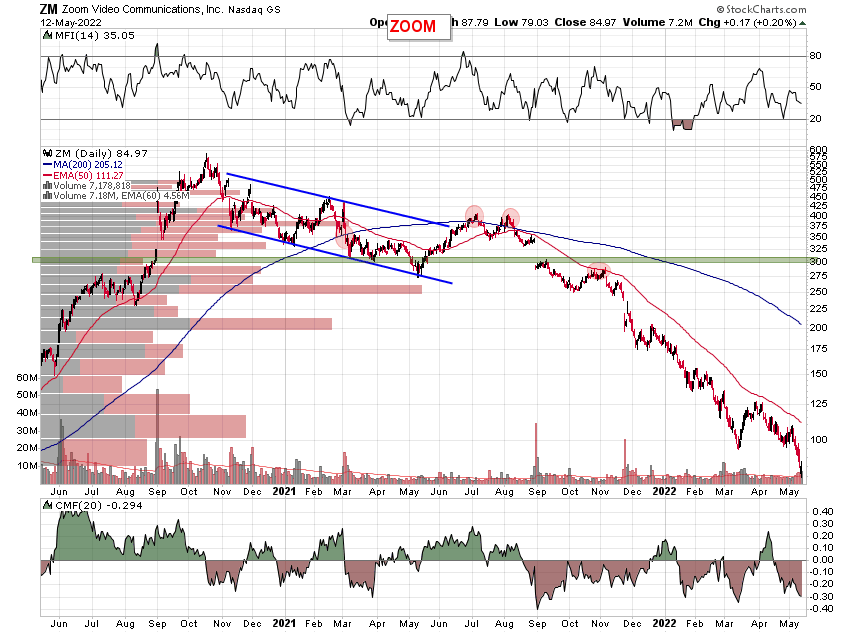
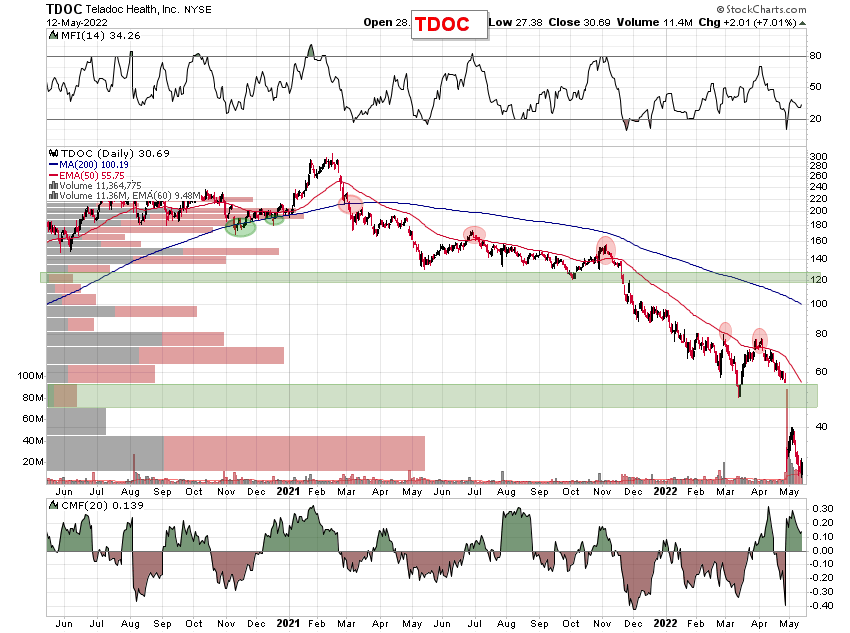
Peloton…
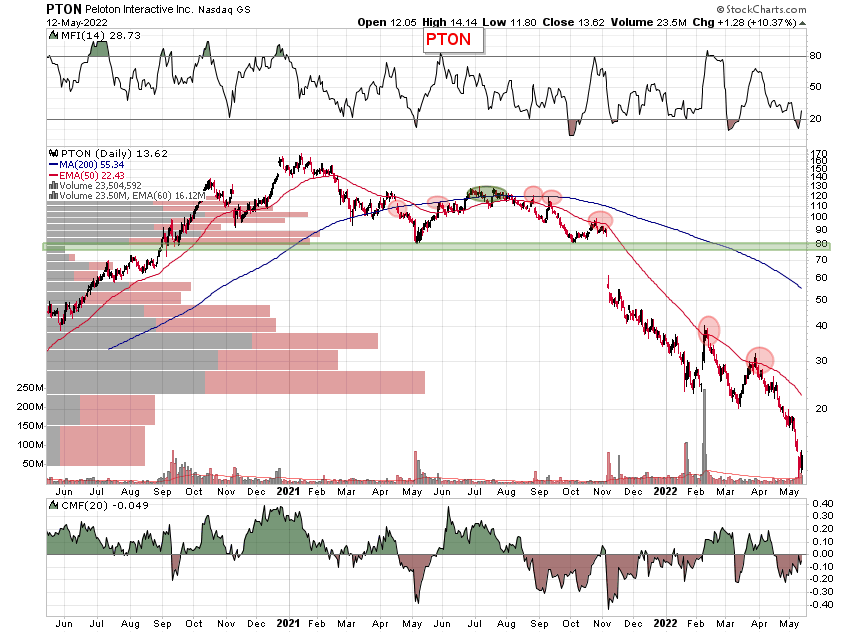
Fastly and Equinix…
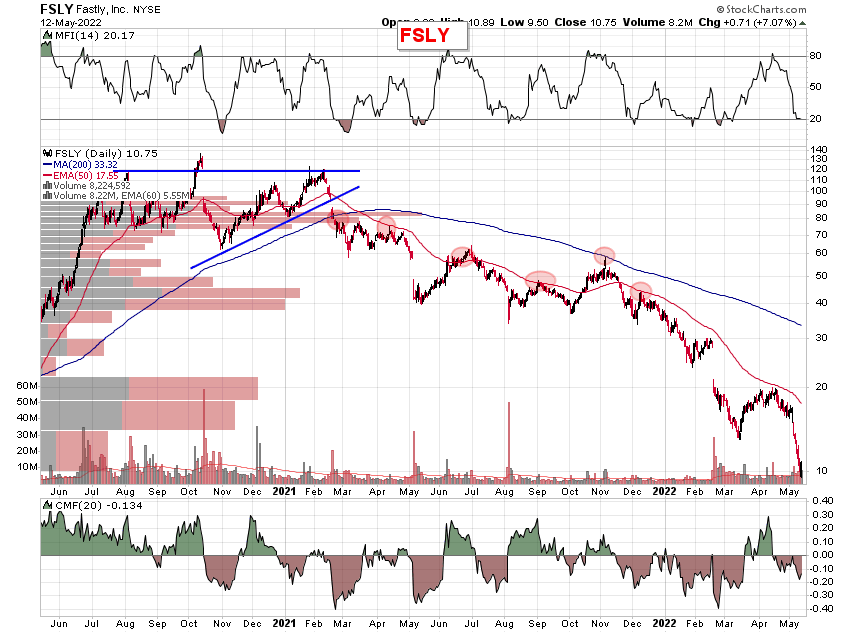

Etsy…
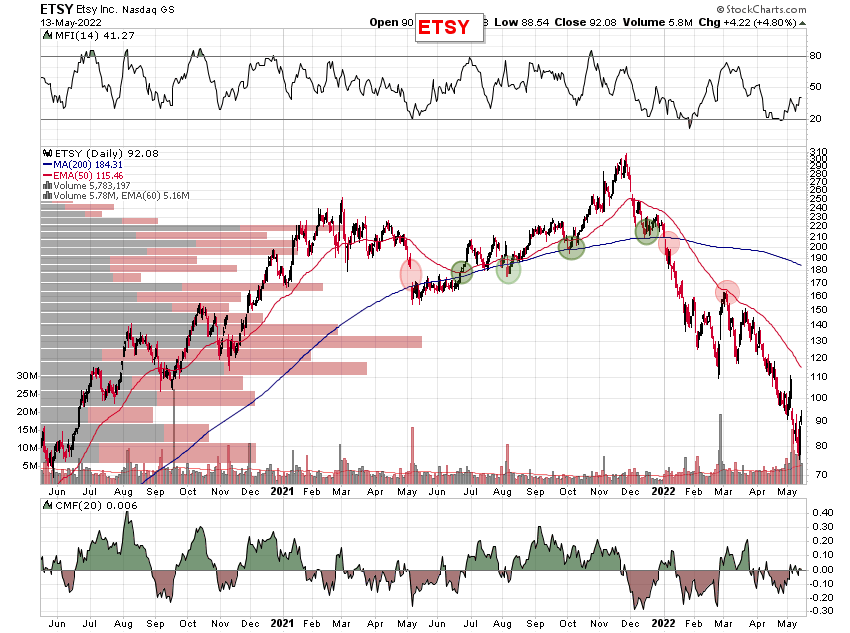
Spotify…
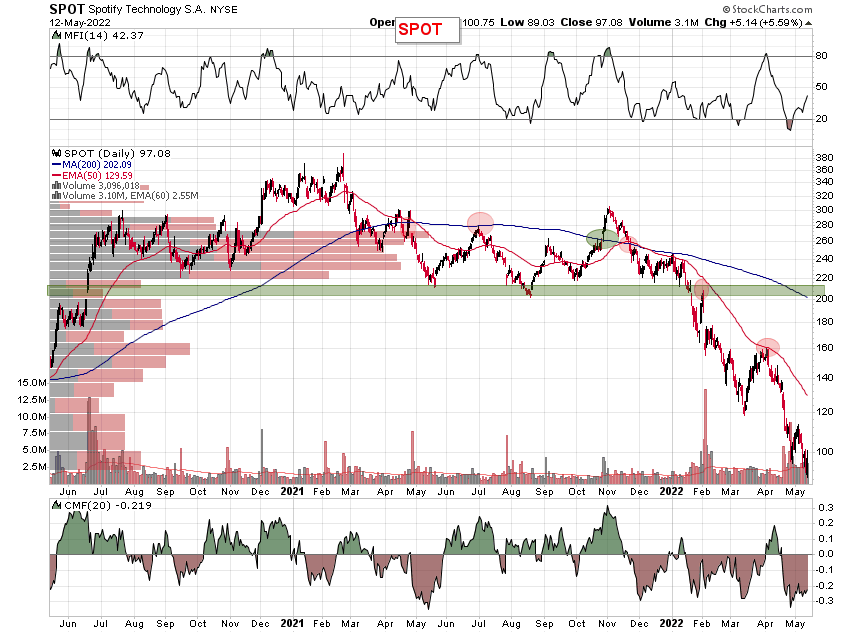
Splunk, MongoDB and DataDog…
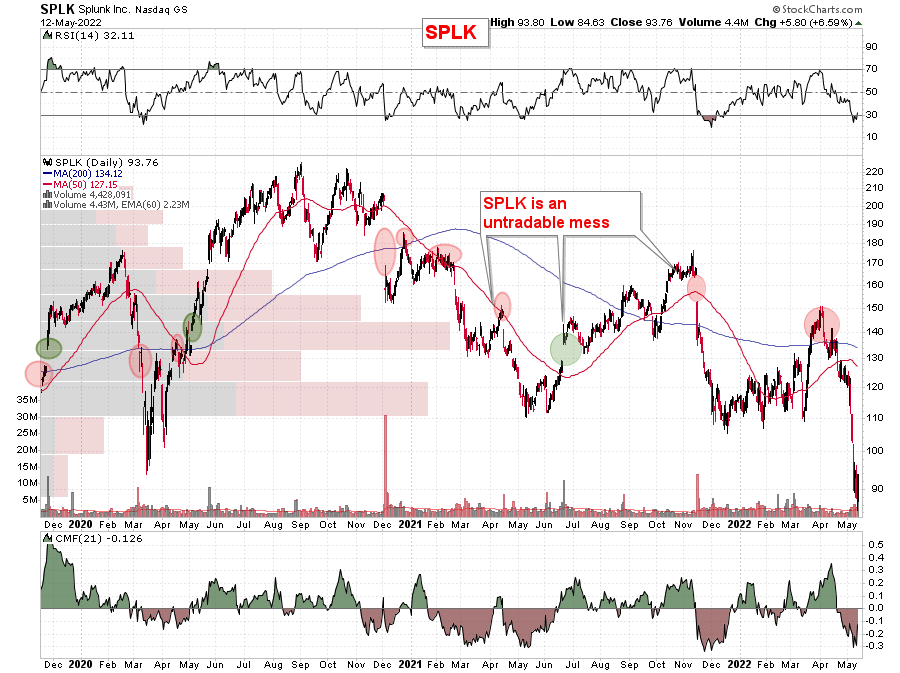

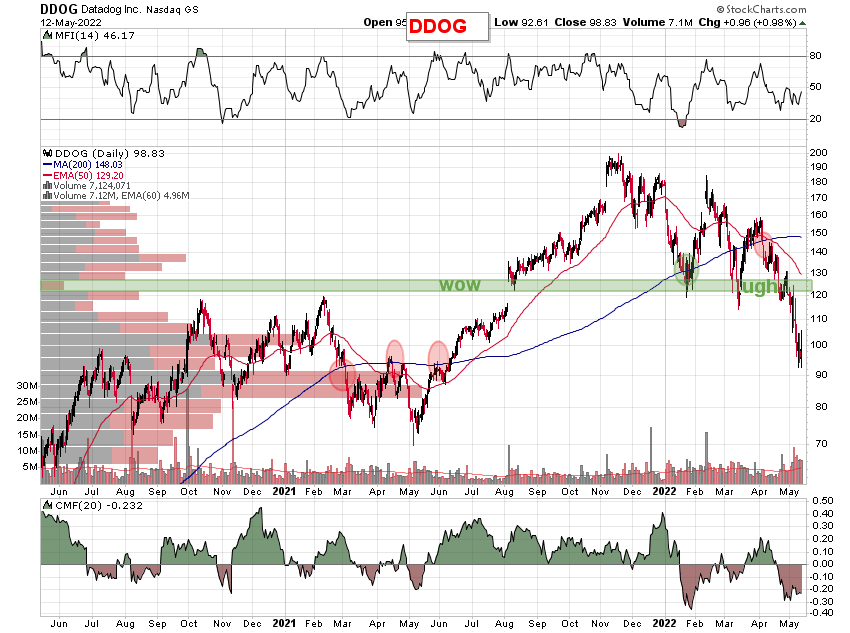
Several things to note.
First, timing the market is a bitch. Sometimes tops come so quickly, they barely register a tick on the chart. Other times, they drag out over months. You’ll see that some of the stocks had minor rallies before imploding while others meandered for the rest of the year before finally succumbing. The key is to look at a basket of stocks to identify general trends. For instance, when Documentum (DOCU) broke down late last year, I knew that the rest of the Software as a Service sector would decline as well. That type of shock will affect the entire sector and even the entire market.
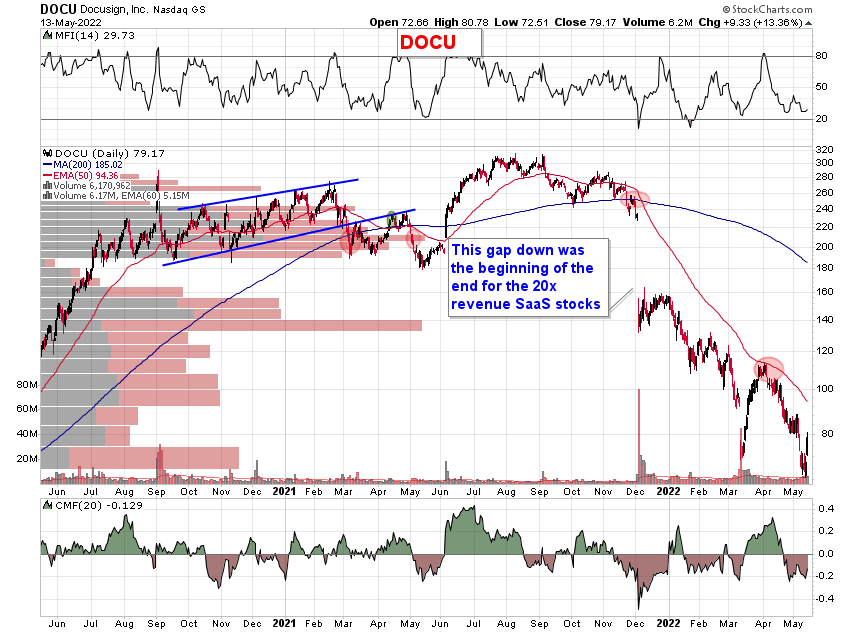
Second, the stock declines accelerate once major support broke. Pay special attention to stocks that gap down through support. Some of the weaker stocks like Zoom and Peloton that had major gaps down through support never even rallied back to the 50 day moving average once they broke down. While it’s hard to sell a stock when it’s down that much, the first sale is typically the best one. Get out, take your lumps and move on.
Finally, although these stocks have gone down 50% to 90% from their highs, they are not buys. After a thrashing like this, stocks generally need to build bases over years to have any chance for a sustainable rally. We’ll address what these stocks might look like in “The Bottom” section below.
The End
Unfortunately, the rest of the technology sector is looking very much like the COVID related charts did last year.
Many leading stocks are just now breaking their 200 day moving averages.
Apple…
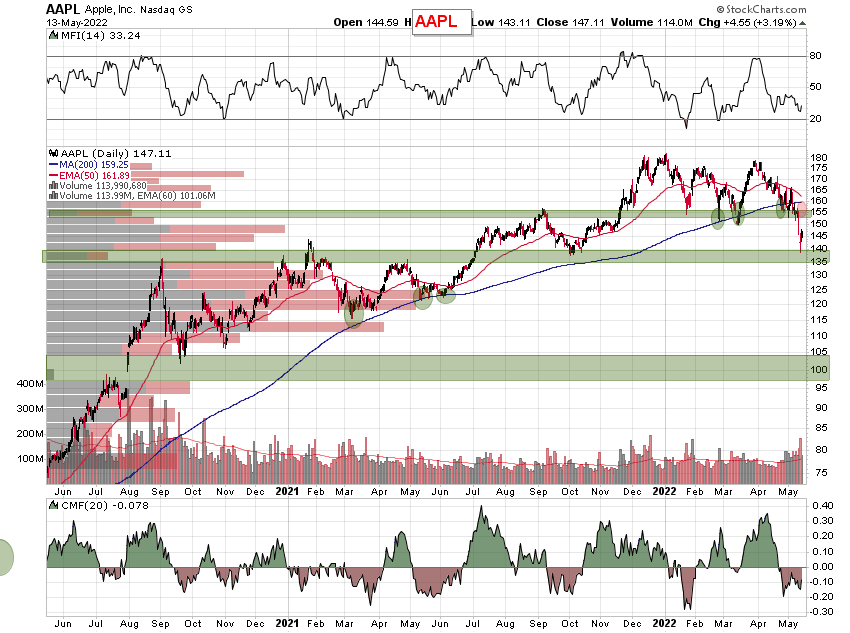
Microsoft…
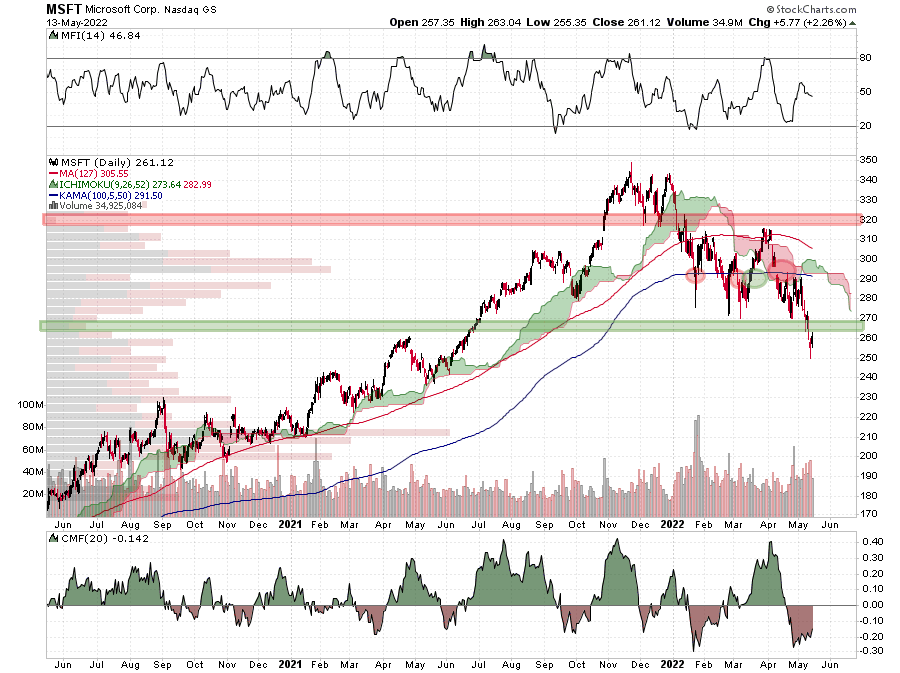
Tesla…
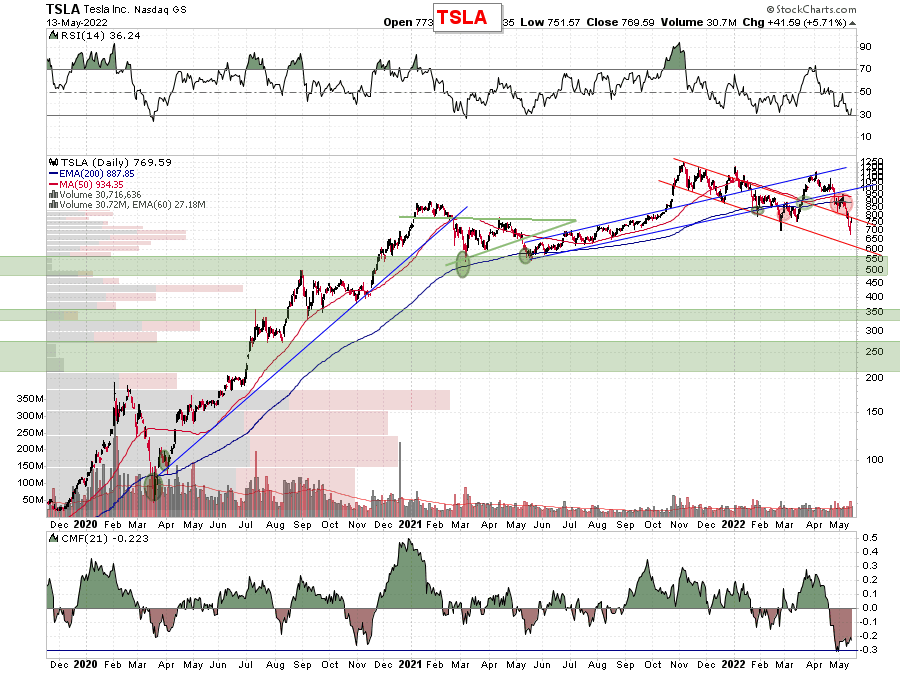
Amazon…
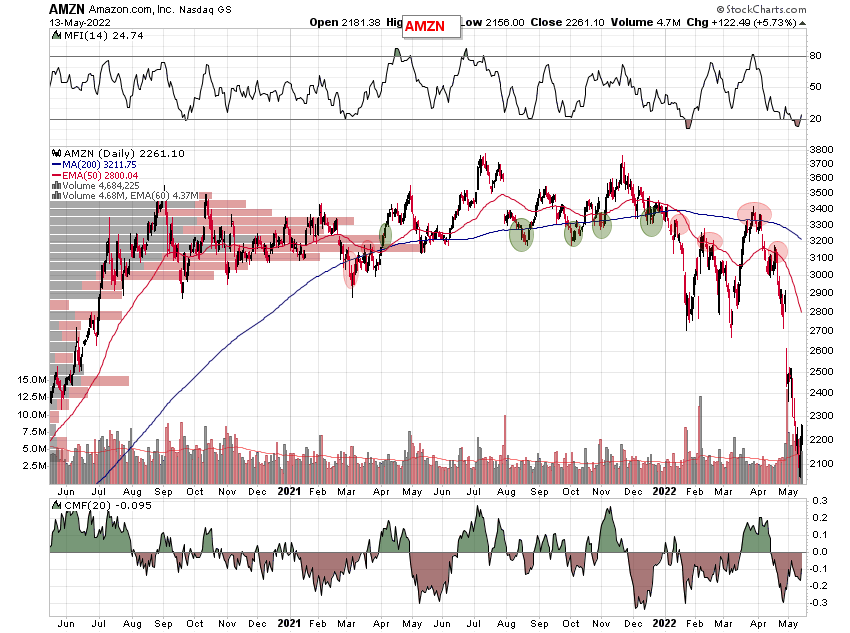
Target…

Overall, the market is not looking healthy. Having leading stocks which make up a significant percentage of the S&P 500 trading below the 200 day moving average basically ensures we will be in a bear market.
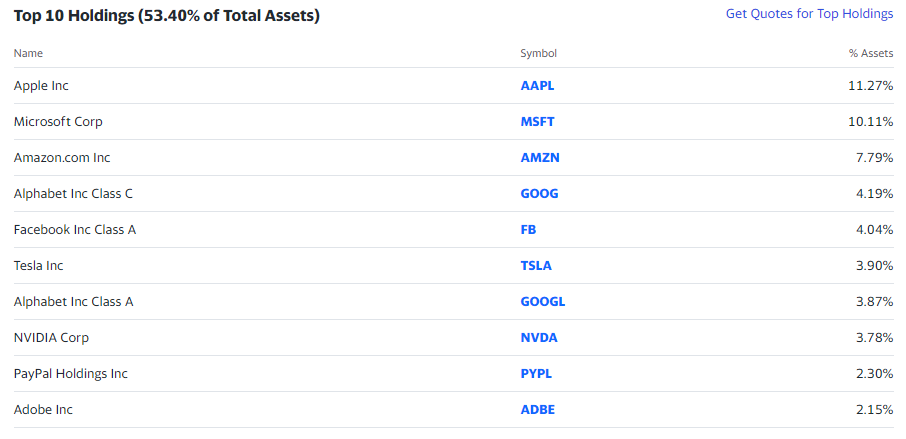
You might say to yourself, “Thanks Contra but most of these stocks are already down significantly. You’re not telling me anything I don’t know.”
But I think I am. Bear markets usually don’t last three to six months. Especially, when you don’t have the support of the Federal Reserve and Treasury behind you.
Don’t get me wrong. Some of these high quality stocks could definitely bounce 20%-30% to test their broken moving averages. For instance, Adobe (ADBE) just broke its 200 day moving average at the end of last year. It could certainly bounce $50 – $100 from these levels. But that’s a bull-trap in a bear market. At that point, I would be a seller.
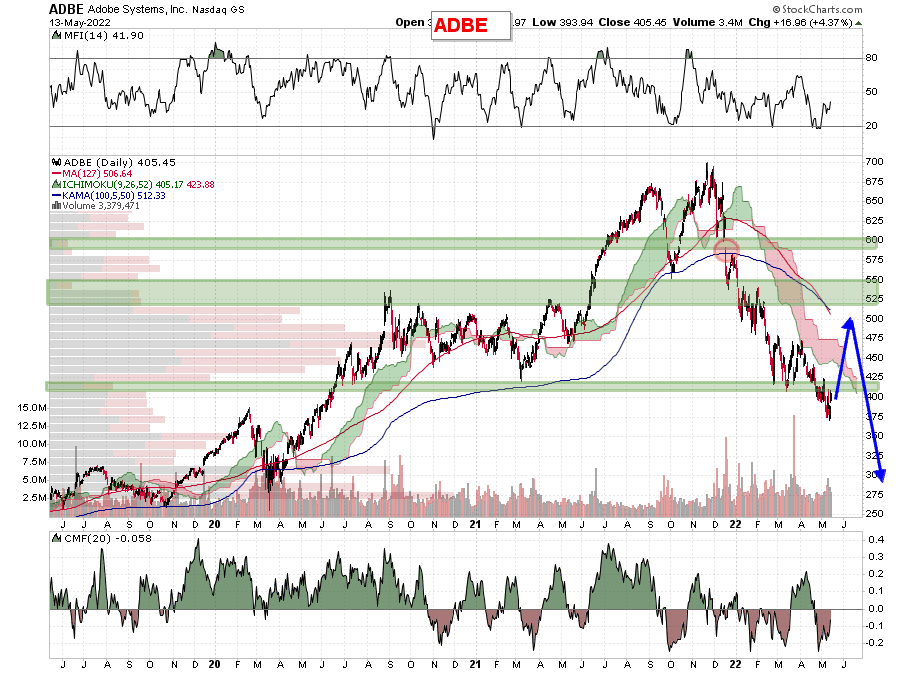
So while I wouldn’t be selling stocks right here, I would use bounces to lighten up on equity exposure.
The Bottom
To see what will happen to these stocks and what might make them go back up, let’s take a look back at the year 2000 NASDAQ stock implosion.
We’re just now completing the first leg down in the post-COVID bear market. After the year 2000, most stocks that survived had at least three legs down over the next 24 months.
Take special note of the prices where these stocks bottomed. Many started in the $100s but didn’t bottom until they were trading in the single digits. While it’s not hard to imagine a stock like Peloton trading under $10, since it’s practically already there, I think a large majority of stocks of money-losing companies will see single digit prices over the next 24 months. Companies that have no cash flow and can’t buy back their own stock will be ruthlessly sold by the market.
This is exactly what happened to internet darling JDS Uniphase (JDSU) back in 2001. JDSU had three steep down turns before finally bottoming 24 months after the initial breakdown.
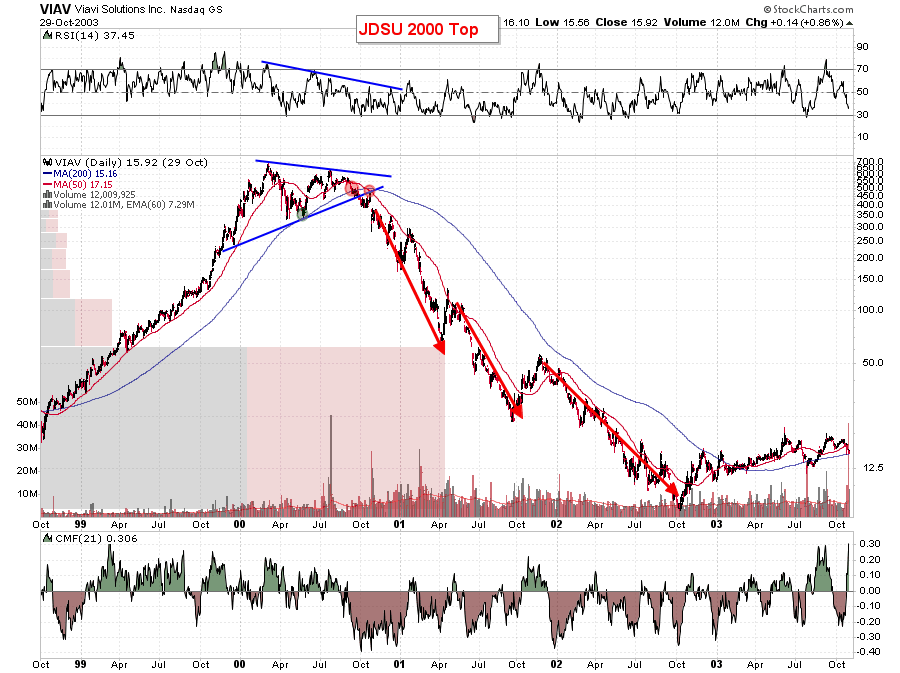
Intel (INTC), while never running up as much as some year 2000 compatriots, still had a hard fall. It also took two years to bottom but its decline was interconnected by a choppy 12 months sideways range. I’m guessing that many blue chip technology stocks will follow this pattern over the next two years.
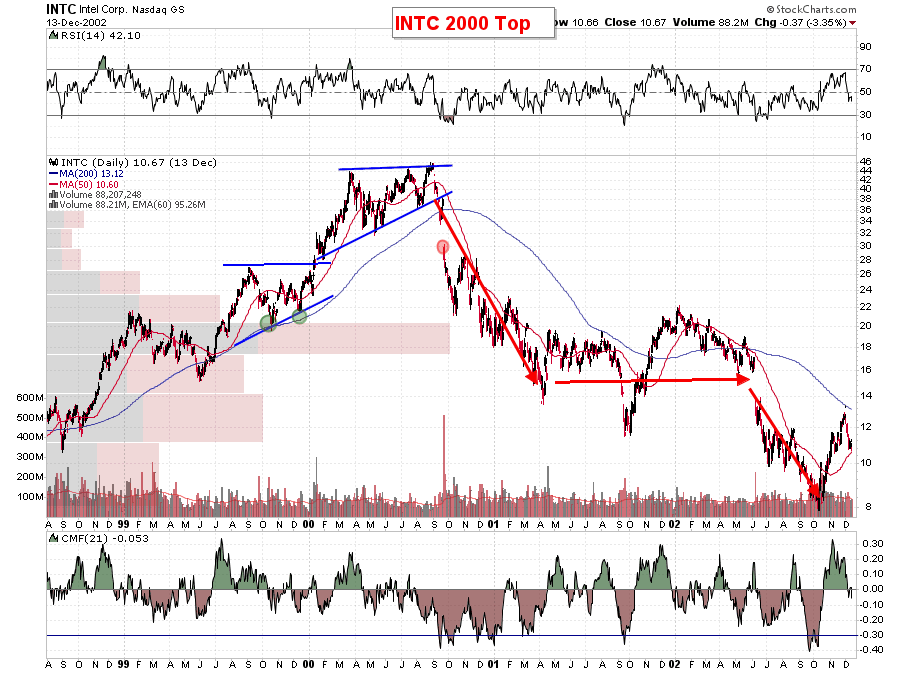
Interestingly, Amazon (AMZN) which was the internet darling in the year 2000, topped out earlier but also bottomed before the other internet stocks. It only had two major legs down.
AMZN also broke up, above the 200 day moving average, which gave investors a much better inkling that the stock had finished going down. The next group of outperforming stocks will lead out of the upcoming bear market just as Amazon lead out of its bottom in 2002.
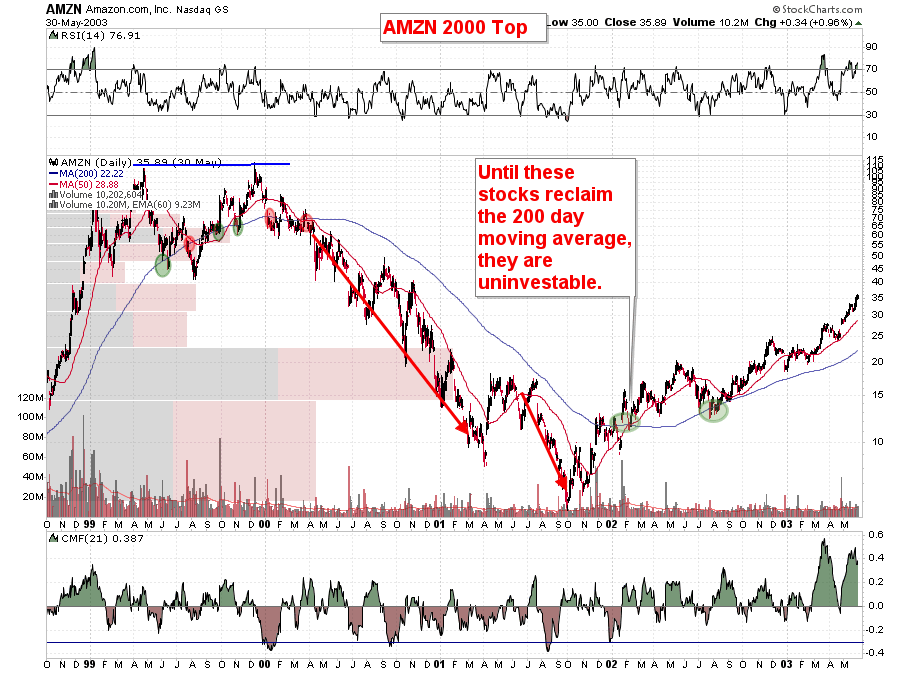
Helmet cords tight. It’s going to be a bumpy ride as the rest of the market catches up to the COVID stocks.
